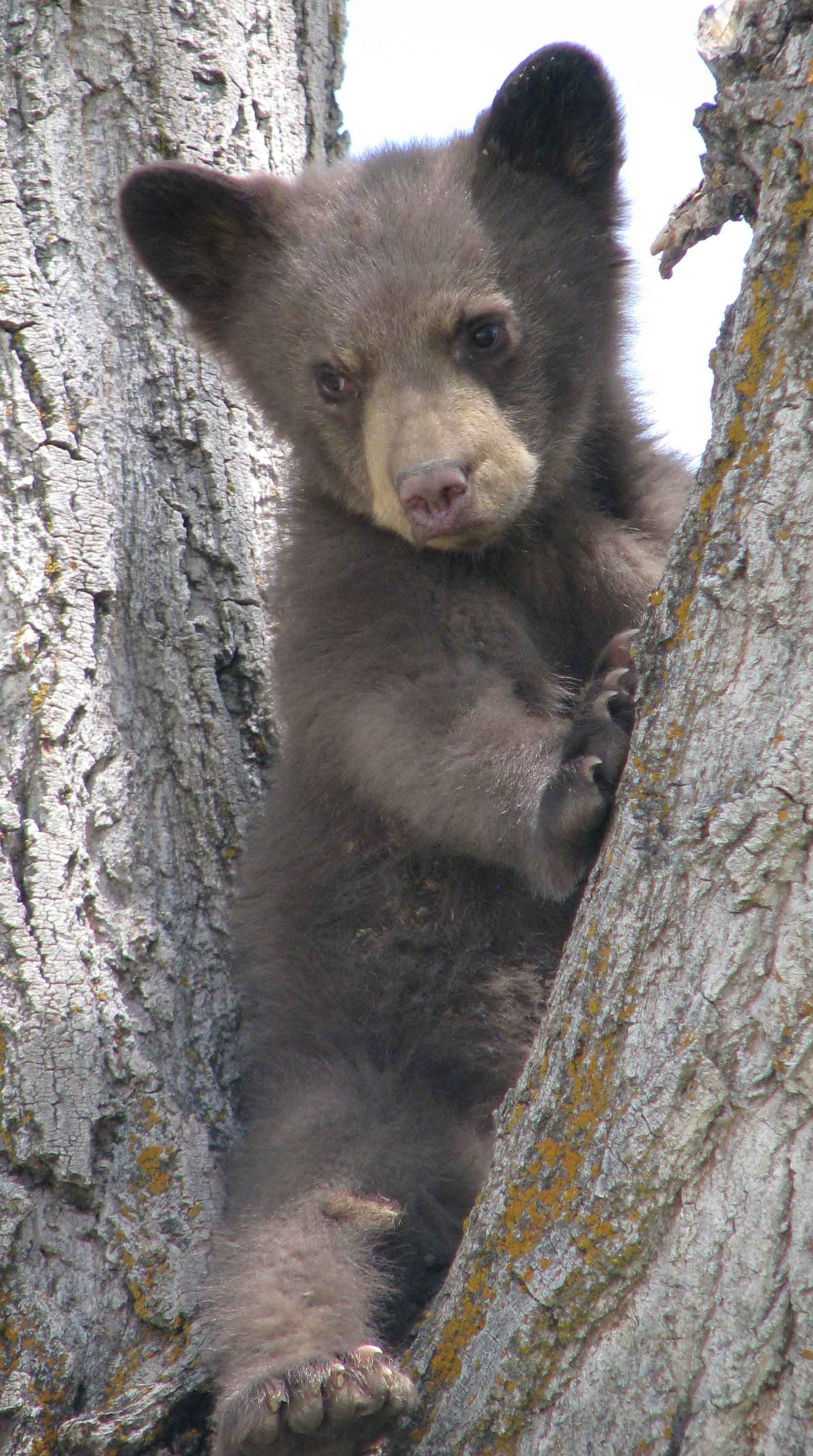SCIENTIFIC NAME:
Ursus americanus
STATUS:
Rare. Once found statewide, but now extirpated from most of the state. Breeding populations remain in an area just north of Mobile. In recent years, a small breeding population has reestablished in northeast Alabama in the Lookout Mountain area of Dekalb and Cherokee counties and the Talladega National Forest area of Calhoun and Cleburne counties. Transients from Georgia and Florida also occasionally enter the state. HIGHEST CONSERVATION CONCERN.
DESCRIPTION:
The black bear (Ursus americanus) is the smallest of the North American bears. Males (boars) are typically 30 to 40 percent larger than females (sows). Male black bears weigh an average of 250 pounds, with the heaviest recorded weight of 880 pounds The average weight for females is 150 pounds, with some weighing over 300 pounds Adult bears range from 2-1/2 to over 3 feet tall at the shoulder and are approximately 4 to 7 feet long. They have stocky, compact bodies, with small tails and rounded ears. Their pronounced muzzles are brown. They have small eyes for their body size. Their claws are more tightly curved and smaller than other North American bears. Black bears exhibit several different color phases. The most common color is black, from which they draw their names. Other color phases include brown, cinnamon (reddish-brown), blond and even white in isolated coastal areas of British Columbia. Their fur is relatively short and smooth compared to other North American bears and consists of soft underfur with coarse guard hairs. Black bears sometimes have a white chest blaze that varies significantly in size and shape. Their fur insulates them from cold temperatures, water, and biting insects. They have a very keen sense of smell, many times greater then even a bloodhound. Black bears are agile tree climbers. Unlike many predators, black bears can see color. Black bears, when alarmed or threatened, will often assume an aggressive posture by lowering their heads and raising their hackles. They may also snarl, showing their teeth, pop their teeth together for sound, and salivate heavily. Black bears can run over 30 miles per hour for short distances.
DISTRIBUTION:
The American black bear is the most widespread inhabitant of all the North American bears. Their population was once estimated to be two million, but has been reduced to an estimated 700,000 animals due primarily to habitat destruction. Black bears inhabit forested areas scattered throughout North America. They can be found as far south as Florida and as far north as Alaska. The largest population centers and contiguous ranges of black bears are found in the northeast and western parts of the United States, northern Mexico, Canada, and Alaska. Black bears in Alabama are primarily limited to Baldwin, Mobile, and Washington counties. Reports of bears have been confirmed in several northeast counties but are suspected of being transient bears from other southeastern states.
HABITAT:
Black bears inhabit mixed hardwood/pine forested areas that support dense undergrowth/thickets that provide food and cover. They also use small open meadows surrounded by forested areas to browse on a variety of foods. Scattered wetlands, streams, and ponds provide additional sources of food as well as water. Black bears require large tracts of land undisturbed by man. Male bears may roam over 15,000 acres while females usually roam less than 2,600 acres.
FEEDING HABITS:
Black bears, like all North American bears, are described as carnivores, yet they are actually omnivorous, eating whatever is available. Their diet may consist of insects, roots, berries, acorns and other nuts, mushrooms, grasses, and other plant materials, as well as small mammals, such as mice and ground squirrels, deer, elk and moose fawns, fish, crayfish, carrion and even rubbish left by humans in trash cans and campsites. Vegetation normally makes up over 80 percent of their diet. If possible black bears will gorge themselves until they can eat no more. In the colder regions, black bears attempt to put on as much fat as possible to sustain them through hibernation.
LIFE HISTORY AND ECOLOGY:
Black bears are solitary animals. They may live for more than 30 years in the wild. Female bears usually begin to breed at three to five years of age with one to three cubs per litter every other year. Mating occurs May-July with two to three cubs born in January-February after a seven month gestation period. Cubs are born in early spring weighting 1/2 to 1 lb. and are totally dependant on their mothers. Sows will nurse their cubs until they learn to forage on their own. The sows protect the cubs from predators including male black bears that have been known to kill cubs. Cubs stay with their mothers for approximately 1-1/2 years; until she is ready to mate again, at which time she will force them out of her territory. Black bears may or may not hibernate depending on the severity of the winter and available food. In extreme conditions black bears have been known to hibernate for over six months.
REFERENCES:
Burt, William H. and Grossenheider, Richard P. 1980. Peterson Field Guides, Mammals. Houghton Mifflin Company, NY, NY. 271 pp.
Nora Bowers, Rick Bowen, and Kenn Kaufman. 2004. Mammals of North America. Houghton Mifflin Company, NY, NY. 351 pp.
National Audubon Society. 1996. Field Guide to Mammals, North America. Chanticleer Press, Inc. 937 pp.
Author:
Daniel Toole







